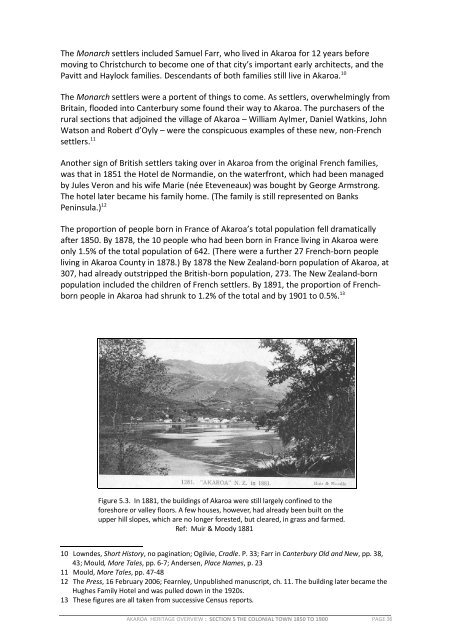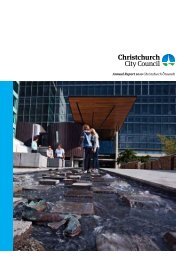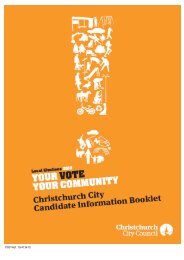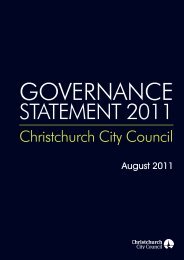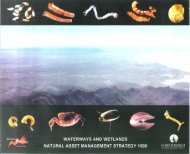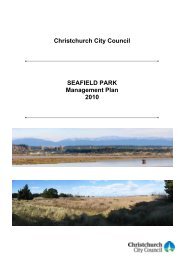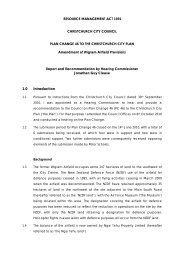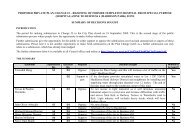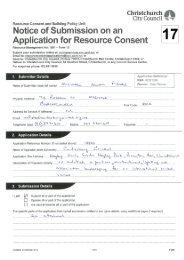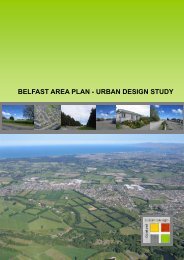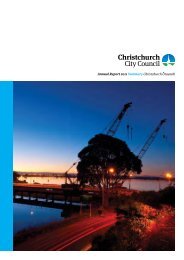Akaroa Historical Overview - Christchurch City Council
Akaroa Historical Overview - Christchurch City Council
Akaroa Historical Overview - Christchurch City Council
You also want an ePaper? Increase the reach of your titles
YUMPU automatically turns print PDFs into web optimized ePapers that Google loves.
The Monarch settlers included Samuel Farr, who lived in <strong>Akaroa</strong> for 12 years before<br />
moving to <strong>Christchurch</strong> to become one of that city’s important early architects, and the<br />
Pavitt and Haylock families. Descendants of both families still live in <strong>Akaroa</strong>. 10<br />
The Monarch settlers were a portent of things to come. As settlers, overwhelmingly from<br />
Britain, flooded into Canterbury some found their way to <strong>Akaroa</strong>. The purchasers of the<br />
rural sections that adjoined the village of <strong>Akaroa</strong> – William Aylmer, Daniel Watkins, John<br />
Watson and Robert d’Oyly – were the conspicuous examples of these new, non-French<br />
settlers. 11<br />
Another sign of British settlers taking over in <strong>Akaroa</strong> from the original French families,<br />
was that in 1851 the Hotel de Normandie, on the waterfront, which had been managed<br />
by Jules Veron and his wife Marie (née Eteveneaux) was bought by George Armstrong.<br />
The hotel later became his family home. (The family is still represented on Banks<br />
Peninsula.) 12<br />
The proportion of people born in France of <strong>Akaroa</strong>’s total population fell dramatically<br />
after 1850. By 1878, the 10 people who had been born in France living in <strong>Akaroa</strong> were<br />
only 1.5% of the total population of 642. (There were a further 27 French-born people<br />
living in <strong>Akaroa</strong> County in 1878.) By 1878 the New Zealand-born population of <strong>Akaroa</strong>, at<br />
307, had already outstripped the British-born population, 273. The New Zealand-born<br />
population included the children of French settlers. By 1891, the proportion of Frenchborn<br />
people in <strong>Akaroa</strong> had shrunk to 1.2% of the total and by 1901 to 0.5%. 13<br />
Figure 5.3. In 1881, the buildings of <strong>Akaroa</strong> were still largely confined to the<br />
foreshore or valley floors. A few houses, however, had already been built on the<br />
upper hill slopes, which are no longer forested, but cleared, in grass and farmed.<br />
Ref: Muir & Moody 1881<br />
10 Lowndes, Short History, no pagination; Ogilvie, Cradle. P. 33; Farr in Canterbury Old and New, pp. 38,<br />
43; Mould, More Tales, pp. 6-7; Andersen, Place Names, p. 23<br />
11 Mould, More Tales, pp. 47-48<br />
12 The Press, 16 February 2006; Fearnley, Unpublished manuscript, ch. 11. The building later became the<br />
Hughes Family Hotel and was pulled down in the 1920s.<br />
13 These figures are all taken from successive Census reports.<br />
AKAROA HERITAGE OVERVIEW : SECTION 5 THE COLONIAL TOWN 1850 TO 1900 PAGE 36


